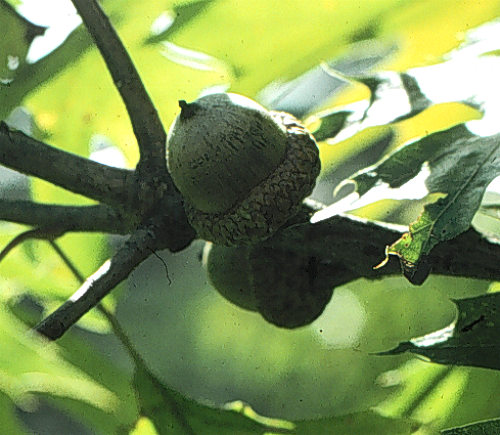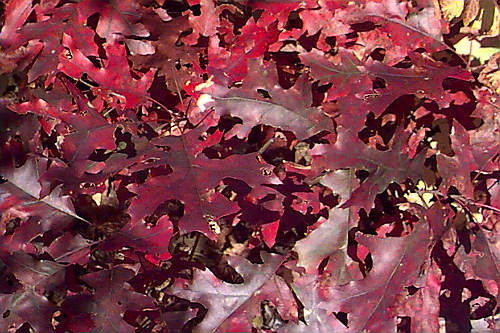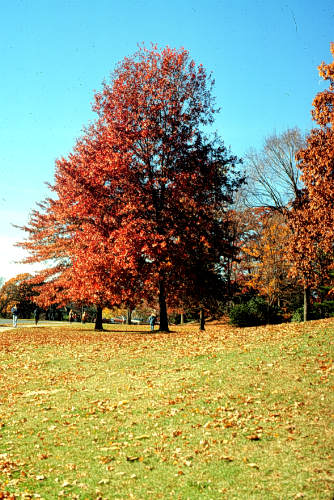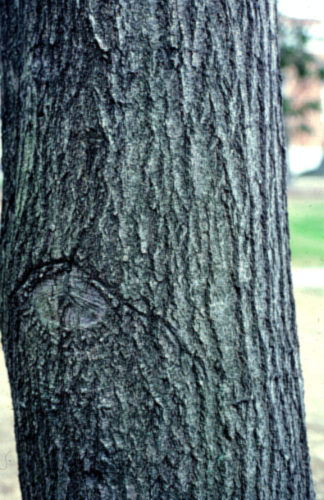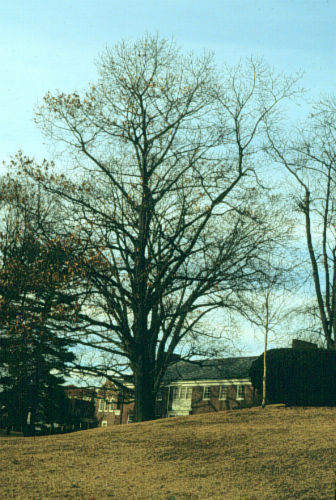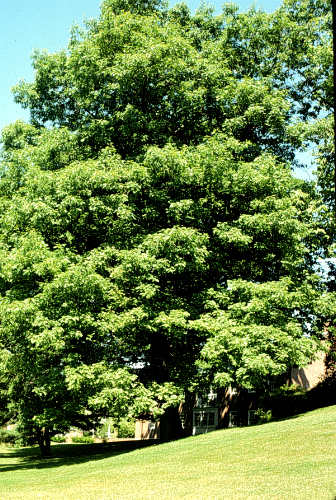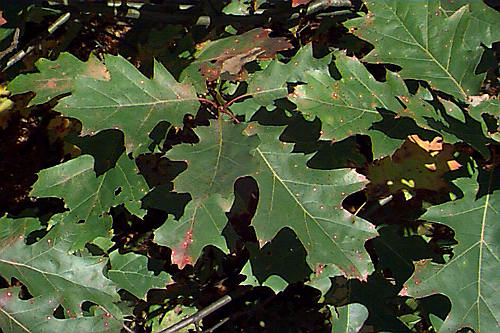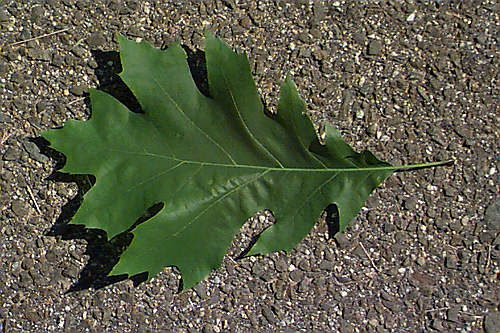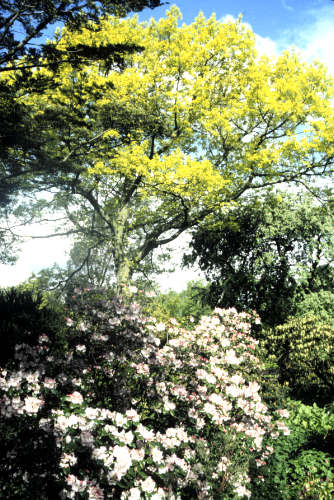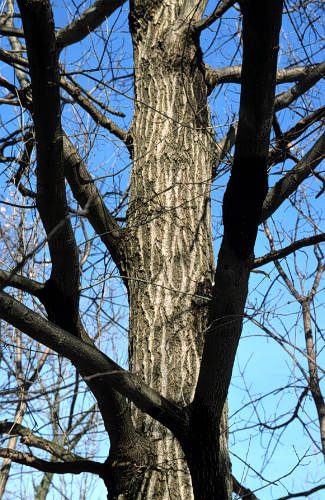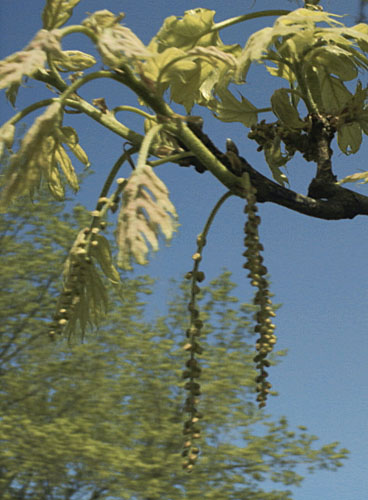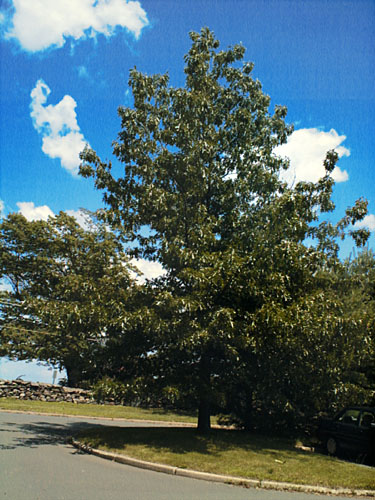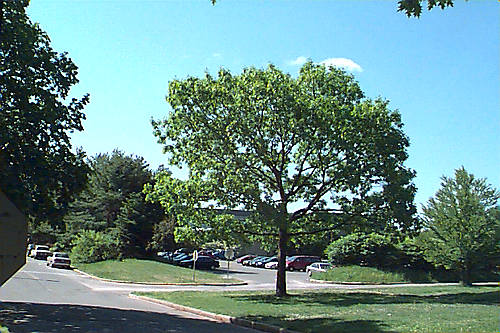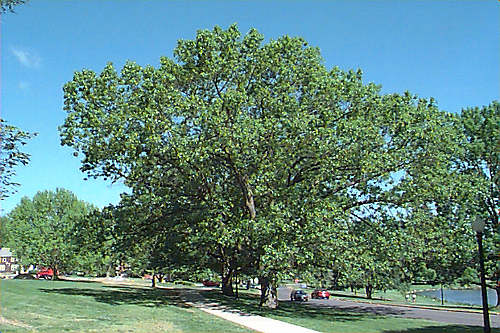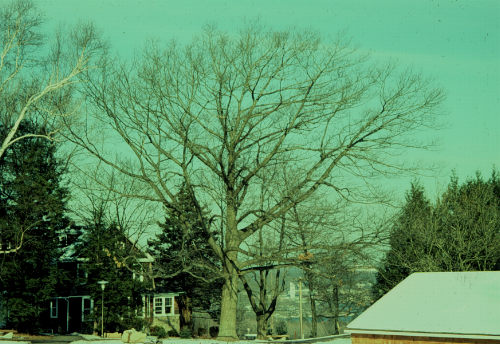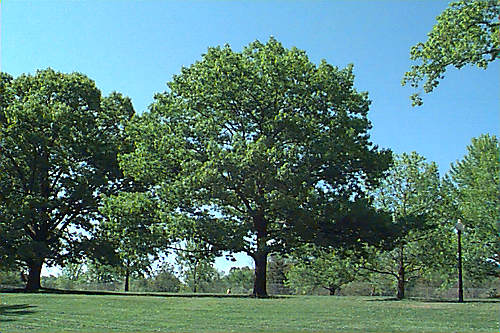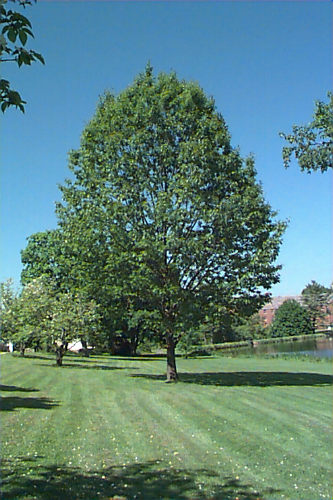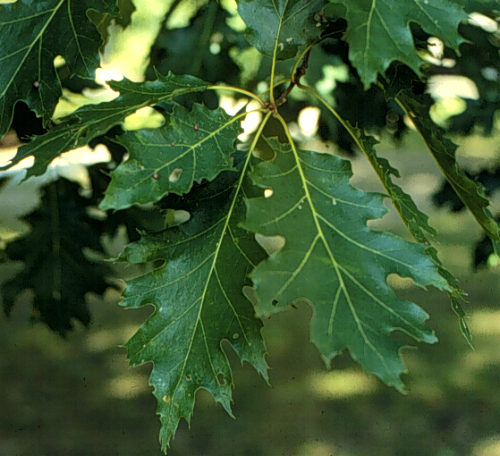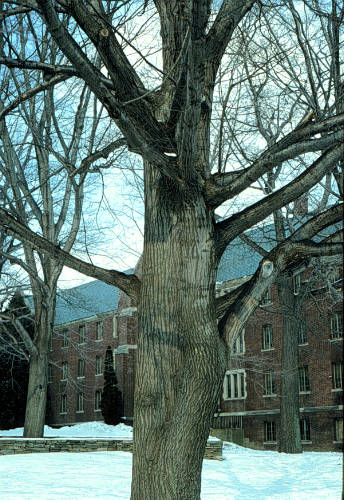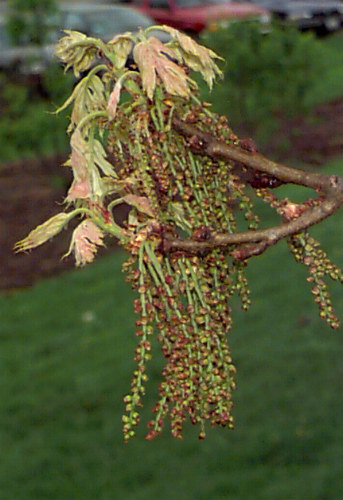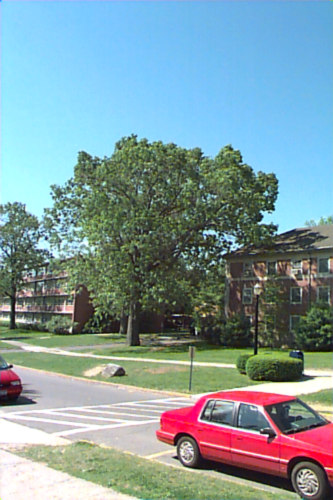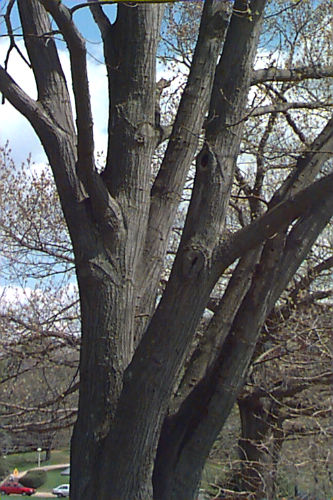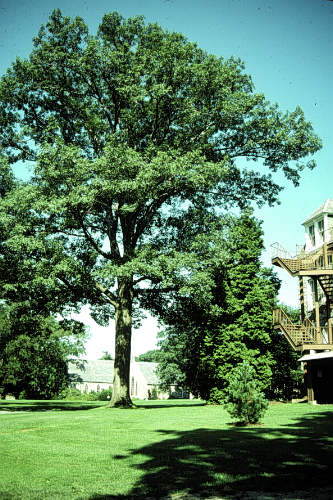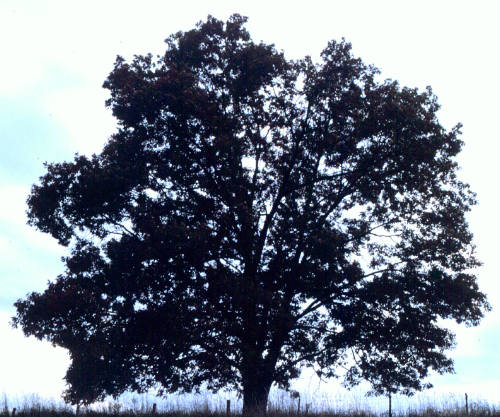Quercus rubra
Red Oak, Northern Red Oak
Fagaceae
ExpandHabitat
- northeastern and north-central U. S.
- zone 3
Habit and Form
- a large, deciduous tree
- to 75' tall
- rounded outline
- upright spreading branches
- large single trunk
- long-lived
Summer Foliage
- alternate leaf arrangement
- 5" to 8" long leaves; 4' to 6" wide
- 7 to 11 bristle-tipped broad lobes
- mature foliage color is dark green above
- leaf surface lustrous
Autumn Foliage
- a mixture of russet-red, yellow and tan
- color develops late
- can be quite good or disappointing
Flowers
- pale yellow-green catkins (male)
- adds slight seasonal interest in May
- monoecious
Fruit
- 0.75" to 1" long brown acorn
- borne singly or in pairs
- acorns have a large, saucer-like cap
- takes two years to mature (black oak group)
- can be numerous, creating a litter problem on lawns and sidewalks
Bark
- brown to black on old branches and trunks
- shallow fissures and ridges that deepen as a plant gets older
- bark on young branches is smooth
Culture
- full sun
- well drained, acidic, sandy loans are best
- easily transplanted for an oak
- grows rapidly for an oak
- withstands urban conditions well
- needs ample room to develop
Landscape Use
- shade tree
- lawn tree
- campuses
- golf courses
- possible street tree where space is sufficient
Liabilities
- chlorosis on high pH soils
- oak wilt has been a problem in the middle U.S.
- needs room to develop
- numerous caterpillars enjoy oak foliage, but feeding damage is usually not severe
ID Features
- large tree
- 7 to 11 broad lobes with a bristle at the tip
- large brown acorns with a flat, saucer-like cap
- buds are chestnut brown
Propagation
- by seed
Cultivars/Varieties
'Aurea' - Not common in the United States, this selection features young leaves with a golden yellow color. This effect will probably fade with the onset of warm weather in hot summer areas of the United States.
'Splendens' - This selection is notable for its fine red fall color. It is not commonly available.
